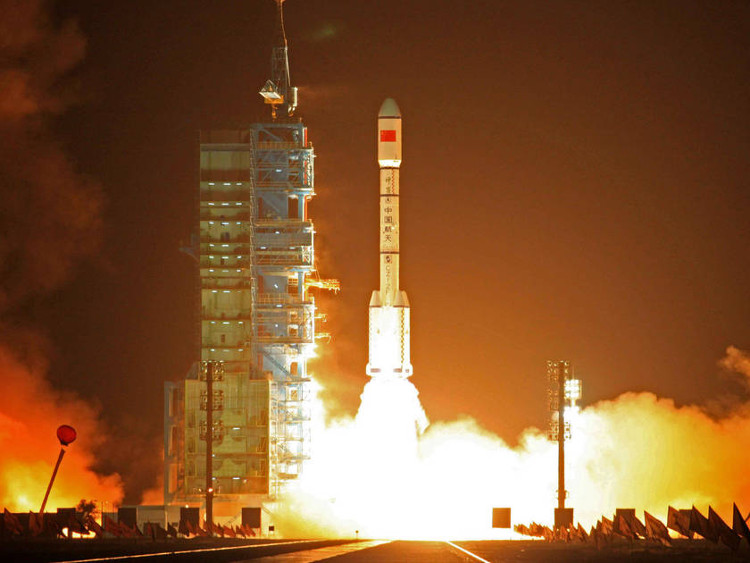The stray 8.5-ton space station will create
Many European countries are expected to catch "fire rain" when China's Thien Cung 1 space station crashed into the Earth early next year.
Experts predict China's 8.5-ton Thien Cung 1 space station will crash into Earth in early 2018 after the Chinese Space Agency lost control of the station in September 2016.
RT news agency on November 8 said the European Space Agency (ESA) has now delineated the locations where Thien Cung 1's fragment could fall. Of these, some European countries may experience 'fire rain'.
ESA will lead an international campaign consisting of a total of 13 space agencies around the world to monitor Thien Cung 1 space station. This station has begun the final phase of crashing into Earth. Much of the space station will burn when it enters the Earth's atmosphere.

The 2FT1 Truong Chinh rocket carries the Thien Cung 1 space station launched at the Tu Tuyen Satellite Launching Center in northwestern China on September 29, 2011.(Photo: TAN HOA XA).
'Based on the station's movement trajectory, we can rule out the possibility that debris will fall off points beyond 43 degrees north latitude and 43 degrees south latitude' - Holger Krag, head of the Debris Office ESA's universe, said in an ESA release earlier this week.
This prediction shows that Spain, Portugal, Italy, Bulgaria and Greece may be interested in 'fire rain' if the large pieces of Thien Cung station are not destroyed when entering the atmosphere and then fall. Europe area.
However, ESA reassured: 'In the history of the cosmology, there has never been any casualties caused by cosmic debris'. According to ESA, Thien Cung 1 station may fall to Earth between January and March of 2018.
Earlier, Jonathan McDowell, a famous astrophysicist at Harvard University, said the near-Earth point of Thien Cung station is now less than 300 km and in the atmosphere. The temperature of this layer is about 3,000-4,000 degrees Celsius. Therefore, the decay rate of Thien Cung 1 is higher.
Meanwhile, Chinese officials insist that the fragments of Heavenly Palace 1 will pose little danger to people and property.'Based on our calculations and analysis, most parts of the space station will melt when entering the Earth's atmosphere,' said Wu Ping, deputy director of the China Space Technology Office. .
- China plans to launch Tiangong Space Station similar to ISS by 2020
- Overview of China's Thien Cung 1 Space Station
- How did the Soviet Union save the Saliut-7 space station?
- NASA celebrates 40 years of the first space station project
- Russian space station will replace the US ISS global surveillance
- China intends to operate the new space station in 2022
- By 2022, China will have the first international space station
- The reason why China's 8.5-ton space station doesn't burn out when it falls
- Raise the trajectory of the International Space Station to 1 km
- China will open the space station for foreign countries
- The first commercial space station is expected to launch in 2020
- The Chinese space station can fall freely to Earth
 Van Allen's belt and evidence that the Apollo 11 mission to the Moon was myth
Van Allen's belt and evidence that the Apollo 11 mission to the Moon was myth The levels of civilization in the universe (Kardashev scale)
The levels of civilization in the universe (Kardashev scale) Today Mars, the sun and the Earth are aligned
Today Mars, the sun and the Earth are aligned The Amazon owner announced a secret plan to build a space base for thousands of people
The Amazon owner announced a secret plan to build a space base for thousands of people